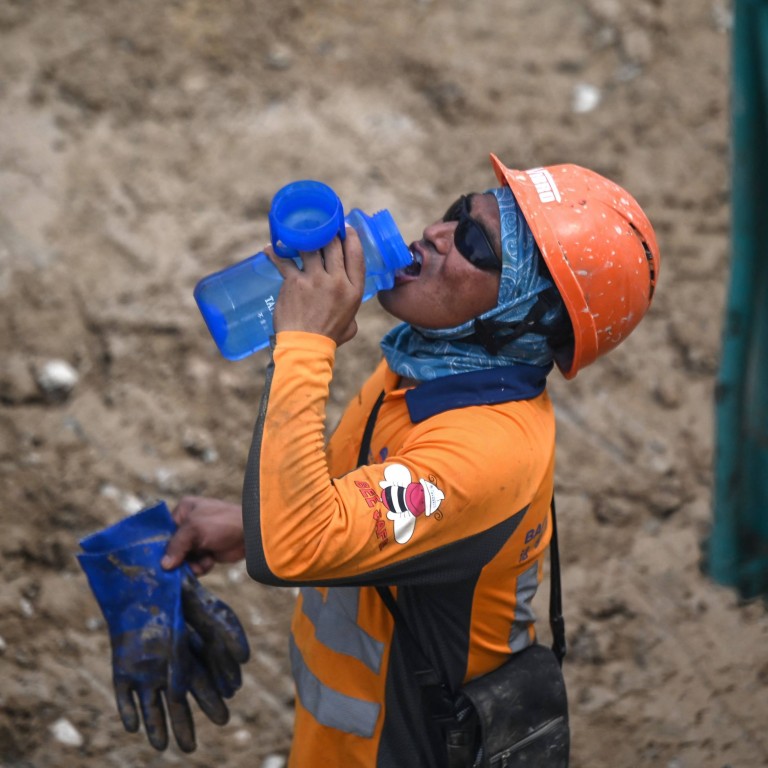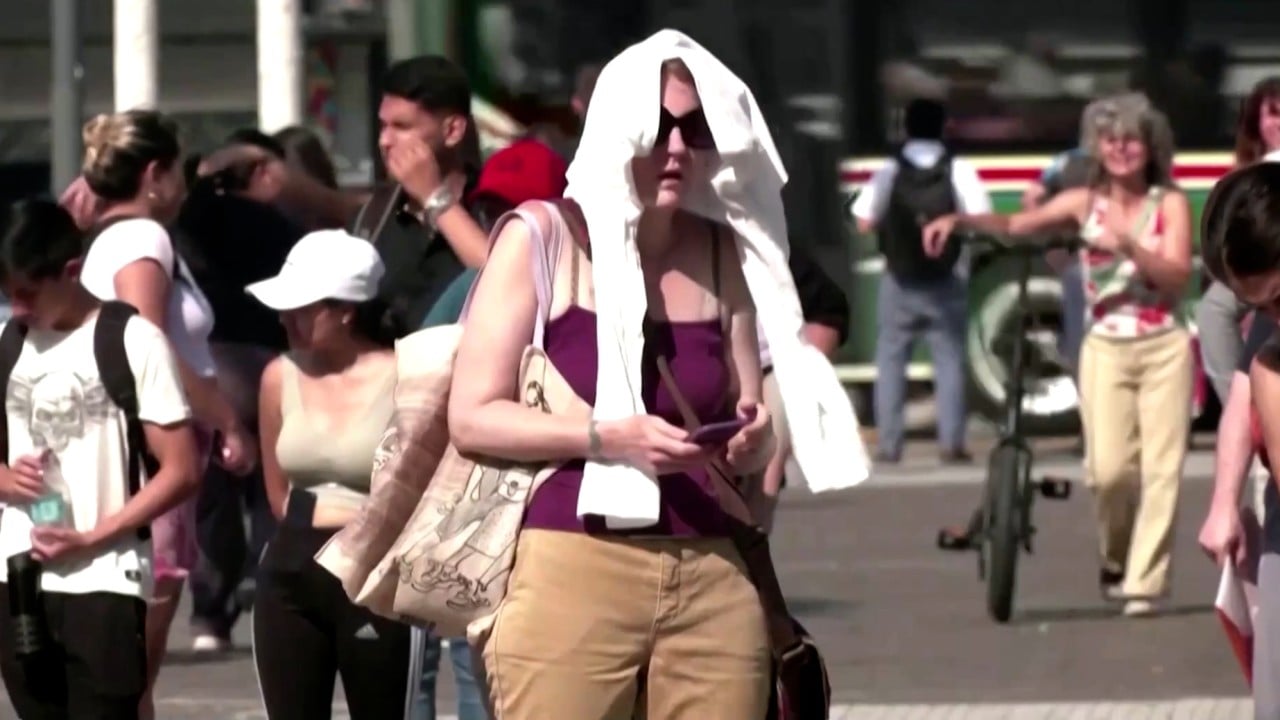
How to improve heat stress warnings for workers and avoid the confusion of flip-flops
- Why not reference global standards like the Wet Bulb Globe Temperature or other local heat stress research that specifically considers workers?
- To avoid inconsistencies, integrating the different heat warning systems is also a must
The three-tier Heat Stress at Work Warning system, introduced by the Labour Department on May 15, uses amber, red and black to indicate the severity of working conditions and is based on the Hong Kong Observatory’s heat index.
Professor Chan, who collaborated with the Observatory in the research and development of its heat index in 2014, found that a heat index of 29.5 was when Hong Kong’s excessive hospitalisation ratio started to increase, and that by 30.5, excessive hospitalisations increased to an alarming level.
Based on this, the Observatory improved its “very hot weather” warning system that same year to issue a special advisory when the heat index is forecast to reach 29.5, followed by a “very hot weather” warning when the temperature is forecast to reach 33 degrees Celsius or when the heat index reaches 30.5.

It was to be based on the heat stress measurement system the Observatory developed to support the 2008 Olympic equestrian events. As an international standard, the Wet Bulb Globe Temperature has been adopted in many places (including mainland China, the United States, Japan, Canada, Singapore and Malaysia) to assess heat stress in working environments.
Before launching the information service, however, the Observatory received a suggestion from a couple of departments that a heat stress index suitable for Hong Kong should be developed instead. This led the Observatory to seek a collaboration with the Chinese University of Hong Kong, successfully developing its heat index after some four years. As the method used to measure the heat index is similar to that required for the Wet Bulb Globe Temperature, the heat stress measurement systems installed at the Observatory’s weather stations can produce both sets of data.
It must be pointed out that, when heat index was developed, the university and the Observatory considered only the effect of heat stress on the general population; workers were not a particular target. Consequently, the 2014 research results are not applicable to local workers, and specifically, the risks of heat stress for acclimatised outdoor workers were not assessed.
I would therefore like to invite the Labour Department to consider if its heat stress warning system for workers could be based the Wet Bulb Globe Temperature instead, and whether the Wet Bulb Globe Temperature’s reference values, used in widely adopted international standards and practices, could become the thresholds for the system.
If this is not possible, are there other heat stress research results targeting local workers that could inform the system’s thresholds?
I agree in principle with Professor Chan’s suggestion to integrate the system with the Observatory’s “very hot weather” warning system. The reason is simple: more information is not necessarily better than less – simple and trustworthy weather warnings enable the public to quickly assess hazardous conditions and take action. They would also help government departments coordinate contingency plans. Complicated or confusing messages do exactly the opposite.
Given the Observatory already releases heat-related weather warnings and advisories at three levels – hot, very hot and extremely hot – the warning system could well be upgraded to a three-tier, amber-red-black system similar to the rainstorm warning system in use for decades. But as the heat stress at work warning system also has a three-tier, amber-red-black system with different criteria, there would be an urgent need to integrate the two.
A priority would be to avoid inconsistencies between the two systems. The Labour Department could, for instance, consider issuing its heat stress warnings for workers during the high-temperature period of the day when the “very hot weather” warning is in effect. This could address the weakness of the heat stress warnings for workers needing to be automatically triggered by the heat index, which can lead to warning flip-flops.
If required, the Labour Department could consult the Observatory’s weather forecaster to handle situations where weather changes, such as the approach of rain and tropical cyclones, could significantly affect the prevailing temperature.
Shun Chi-ming is a former director of the Hong Kong Observatory and former president of the Commission for Aeronautical Meteorology of the World Meteorological Organisation


